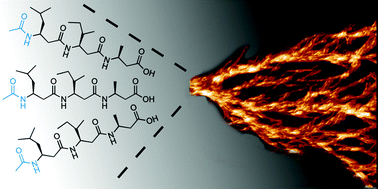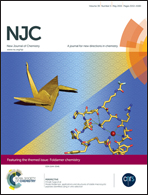Supramolecular self-assembly of 14-helical nanorods with tunable linear and dendritic hierarchical morphologies
Abstract
Bioinspired self-assembly offers a way to create novel functional materials from simple, easy-to-synthesize building blocks. Peptides, in particular, are frequently used in the design of self-assembled materials for their structural properties and the ability for supramolecular “lock and key” type recognition based on H-bonding networks and dispersion interactions. We have previously reported the head-to-tail self-assembly of N-terminal acetylated β-peptides into helical fibrils through a supramolecular three point H-bonding motif, and the superstructures formed from inter-fibril interactions. Here we show that the superstructure morphology of a self-assembled β3-peptide, Ac-β3[LIA], can be tuned to present a range of morphologies by the appropriate solvent medium. From the same monomer we succeeded in creating straight compact “nano-beams”, self-spun threads and complex, dendritic, hierarchical structures. The variation in geometries is therefore achieved through careful switching and tuning of the relative strengths of the inter-fibril H-bonding, van der Waals and solvophobic interactions.

- This article is part of the themed collection: Foldamer Chemistry

 Please wait while we load your content...
Please wait while we load your content...